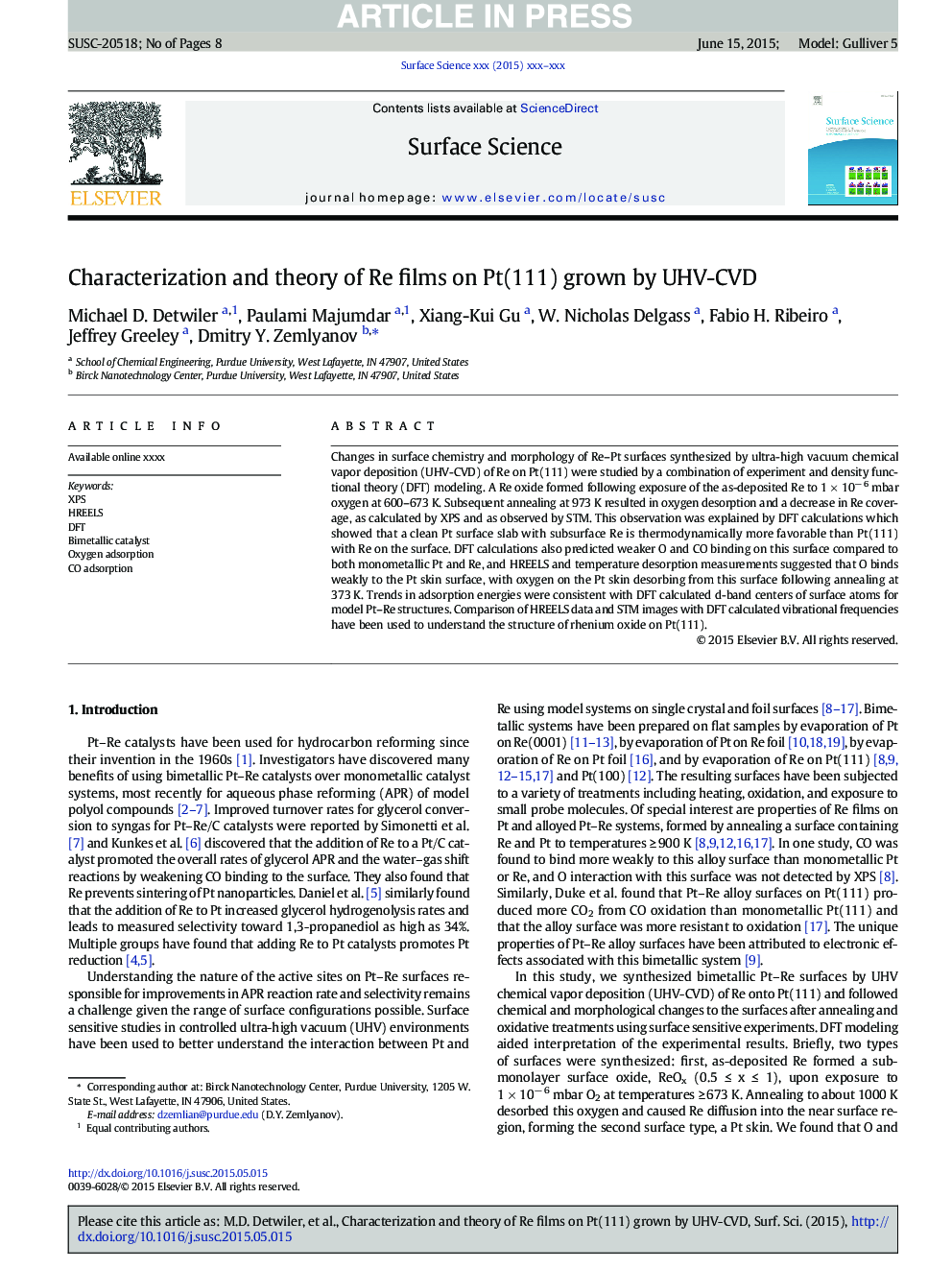| Article ID | Journal | Published Year | Pages | File Type |
|---|---|---|---|---|
| 5421680 | Surface Science | 2015 | 8 Pages |
Abstract
Changes in surface chemistry and morphology of Re-Pt surfaces synthesized by ultra-high vacuum chemical vapor deposition (UHV-CVD) of Re on Pt(111) were studied by a combination of experiment and density functional theory (DFT) modeling. A Re oxide formed following exposure of the as-deposited Re to 1 Ã 10â 6 mbar oxygen at 600-673 K. Subsequent annealing at 973 K resulted in oxygen desorption and a decrease in Re coverage, as calculated by XPS and as observed by STM. This observation was explained by DFT calculations which showed that a clean Pt surface slab with subsurface Re is thermodynamically more favorable than Pt(111) with Re on the surface. DFT calculations also predicted weaker O and CO binding on this surface compared to both monometallic Pt and Re, and HREELS and temperature desorption measurements suggested that O binds weakly to the Pt skin surface, with oxygen on the Pt skin desorbing from this surface following annealing at 373 K. Trends in adsorption energies were consistent with DFT calculated d-band centers of surface atoms for model Pt-Re structures. Comparison of HREELS data and STM images with DFT calculated vibrational frequencies have been used to understand the structure of rhenium oxide on Pt(111).
Related Topics
Physical Sciences and Engineering
Chemistry
Physical and Theoretical Chemistry
Authors
Michael D. Detwiler, Paulami Majumdar, Xiang-Kui Gu, W. Nicholas Delgass, Fabio H. Ribeiro, Jeffrey Greeley, Dmitry Y. Zemlyanov,
